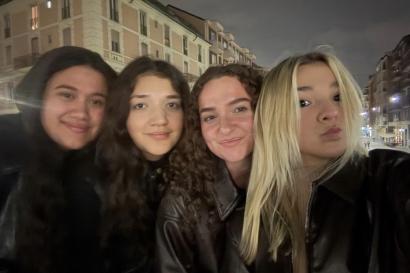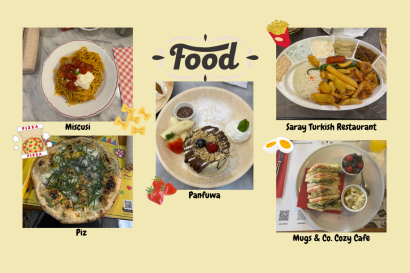
Berlin, Germany
Berlin is alive. In its tiny corners it is quiet. Some sections thrive in the smell of döner kebabs and neon lights; others quietly boast small vintage shops and serene cafés. The Berlin U-Bahn map is intricate, complex, eager to capture you in it’s web and send you off dazed and confused onto the wrong line.
Our hostel was located in the center of Berlin; we had clothing stores, pubs, bars, and restaurants at our easy disposal.
Rather than explain what I did by day, for this post I’d like to show a few of my favorite photos and write brief reviews and impressions of the various places I went to while in Berlin. IES Abroad supplied us with transportation passes and Three Day Museum Passes so we could explore all we wanted to during our many free times. They also took us to see/hear the Beliner Philharmoniker which was the most wonderful experience. Listening to the classical music reminded of my father, with whom I have listened to said music hundreds of times growing up. It was definitely a highlight of this trip.
View from the Berlin U-Bahn window.

The Berlin Wall.

Graffiti under a bridge.
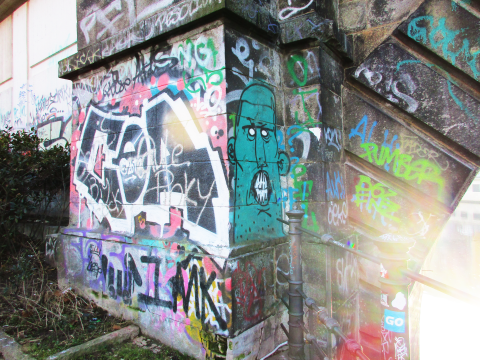
Spree River view; seen on a walk to Museum Island.
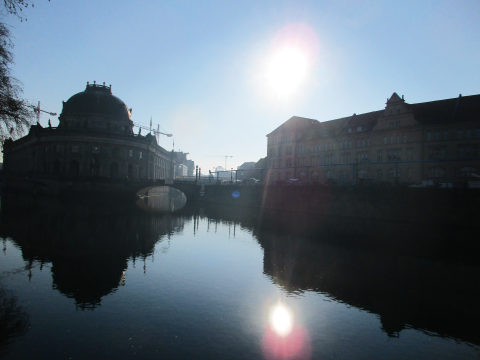
The Berliner Philharmonie.
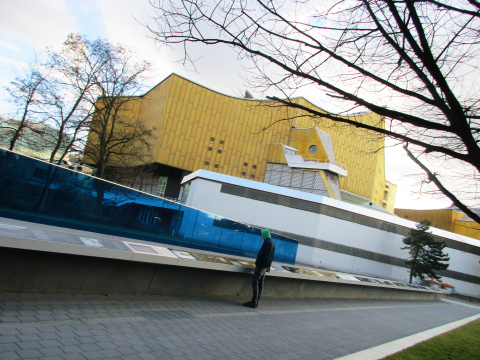
Brandenburg Gate

The Reichstag, where we were given an audio guide tour. There was the most beautiful view out over Berlin from this roof.

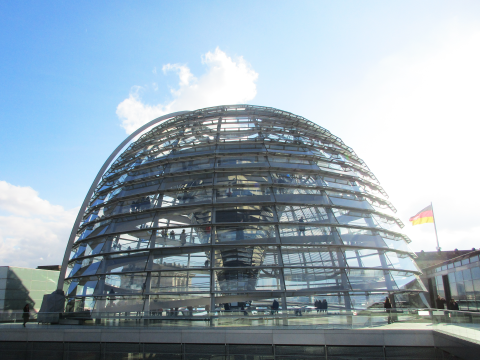

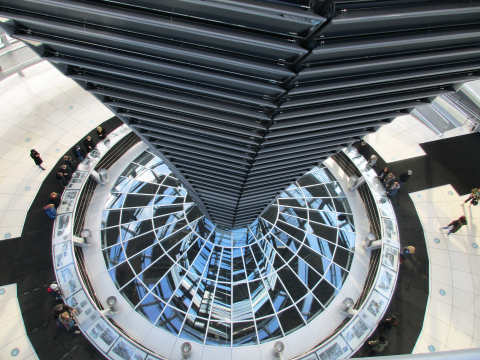

Denkmal für die ermordeten Juden Europas (Memorial to the Murdered Jews of Europe)
This memorial consists of around 2,700 concrete pillars, laid out in straight line formations, creating a maze-like area. I really enjoyed this memorial; when we went it was raining with frozen chunks of ice occasional falling which added to the very tranquil and meditative atmosphere of the piece.

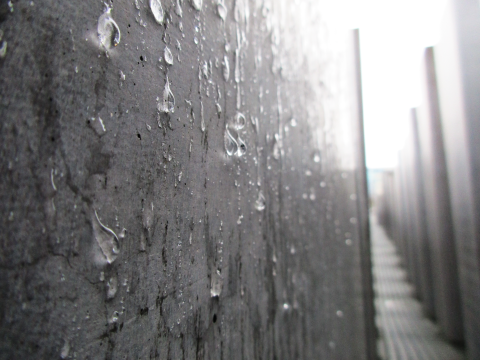

Schwules Museum*
This museum exhibits art and educational information regarding the LGBTI* community in Berlin. The first part shows art, most if not all contemporary, created by LGBTI* artists. The subject of their sexualities and gender identifies were represented in a myriad of mediums. The back part of the museum was labeled Superqueeros, and is the first time a museum has dedicated an entire exhibit to “queer” comics. It was very informative, and even mentioned a cartoonist I like named Alison Bechdel (the creator of the Bechdel test).
Alte Nationalgalerie
This museum has a collection of Neoclassical, Romantic, Biedmeier, Impressionist, and Modernist art. I particularly enjoyed the works of Adolph Menzel. There was a section particularly striking, called “Blind Glances,” in which the artist took away the eyes or face of drawn people; meant to “revolve around the central role of the eyes as an organ and motif of sight’s constant reflection in “Labyrinth of Reality”.” The museum is small enough to finish viewing everything in about an hour and a half.
Drei Brustbilder eines Mannes by Adolph Menzel.
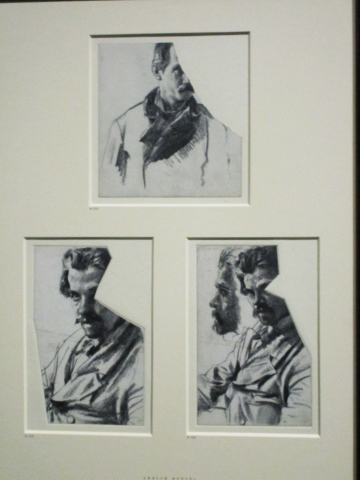
Im Sommer by Renoir.

Gemäldegalerie
The museum of Old Masters Painters, or as I call it, the museum of Many Biblical Scenes and A Few Funny Faced Expressions. If you are not a devout art lover, this museum is not for you. However, do not be deterred; the collection includes pieces by Albrecht Dürer, Jan Van Eyck, Raphael, and Titian. The collection has around 1000 works; this will take you a while.
East Side Gallery
We were taken here during our bus tour, and it did not disappoint. We didn’t have that much time so I wasn’t able to see the entire Gallery, but did get to see the famous painting of Leonid Brezhev and Erich Honecker kissing, titled My God, Help Me to Survive This Deadly Love as created by Dmitri Vrubel. My only complaint is that I did not have the time to see the entire wall; if you make it to Berlin be sure to give yourself enough time to explore all of the works!



Yours truly and My God, Help Me to Survive This Deadly Love (Photo Credit Ileana Exaras).

Behind the wall.

Bauhaus-Archiv Berlin
This was my favorite museum, hands down, that I visited in Berlin. The museum focuses on the life of the Bauhaus School and it’s influence in art, design, and architecture. While the exhibit is not very large, it takes a long time to see all the pieces and listen to their informative audio guides. There are a range of Bauhaus pieces; furniture, prints, architectural designs, and so on.

In order to give the reader a more rounded review of Berlin’s museums (a.k.a. info for those not solely interested in art), I asked my good friend and housemate Emily Spak to write reviews on five of the history museums she visited as well. Emily is a Junior Internal Relations major at Tufts University, and an avid history buff.
The following photos were taken by Emily.
DDR Museum
This is a small museum but it packs in a lot of information about life in the former German Democratic Republic. Recreations of typical GDR living spaces are mixed with windows that visitors can open to read about various East German items and events. This is a quick visit.
Deutsches Historisches Museum (German Historical Museum)
This colossal museum has two floors: the upper floor details German history from the Middle Ages through the end of World War I, and the lower floor covers the Weimar Republic to the reunification process in the 1990s. The number of artifacts presented is mind-blowing. We were here until closing and I could have stayed longer, but it’s mostly suitable for those with a strong interest in German history.

Museum Haus am Checkpoint Charlie
We came here as a group with IES Abroad. Although I’ve learned a lot about the Berlin Wall in school, this museum has several unique elements, including stories of illicit crossings and the famous “You Are Leaving the American Sector” sign. I would reserve a good two hours for this museum.

Topography of Terror
This free museum stands on the site of former Gestapo and SS headquarters – outside, visitors can still see the destroyed basements of those buildings, plus a long stretch of the Berlin Wall. Inside, panels hanging from the ceiling describe the state of Europe during the Third Reich. This involves a lot of reading, but the information is unique and interesting.
Jüdisches Museum Berlin
On the main floors, this museum contains an often-interactive Jewish history of Europe, which of course includes a large section on the Holocaust. Possibly the most haunting part of this museum is an art installation by Menashe Kadishman called “Fallen Leaves,” in which visitors are invited to walk over thousands of loose steel faces that represent victims of violence. I didn’t have much time to spend at this museum, but I suggest staying for a few hours.
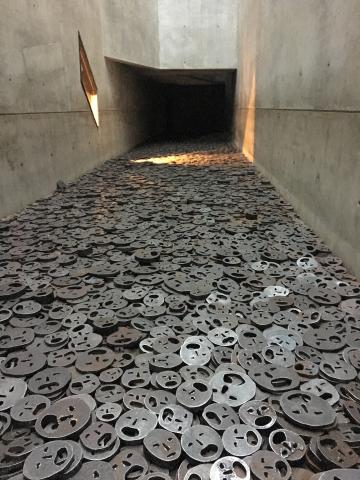
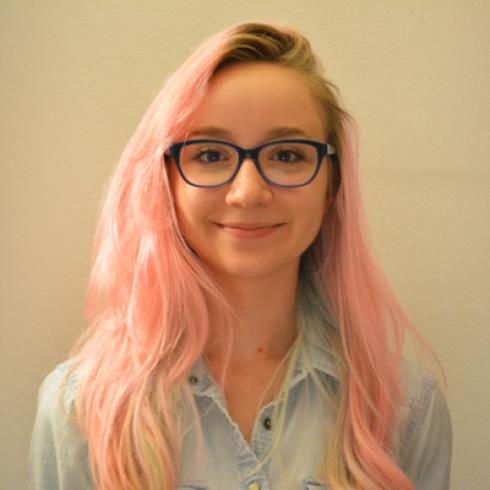
Selina Donahue
<p>Selina is a Junior Studio Art Major at the Catholic University of America in Washington, D.C. She enjoys long walks in the halls of art museums, eating too many cupcakes, and absorbing the world around her to feed as inspiration for all her creative endeavors. Her specialties lie in taking too many pictures and expressing joy over the little things. Selina is excited to share the beauty she sees all over Vienna during her stay with all who hop on over to her little blog!</p>



